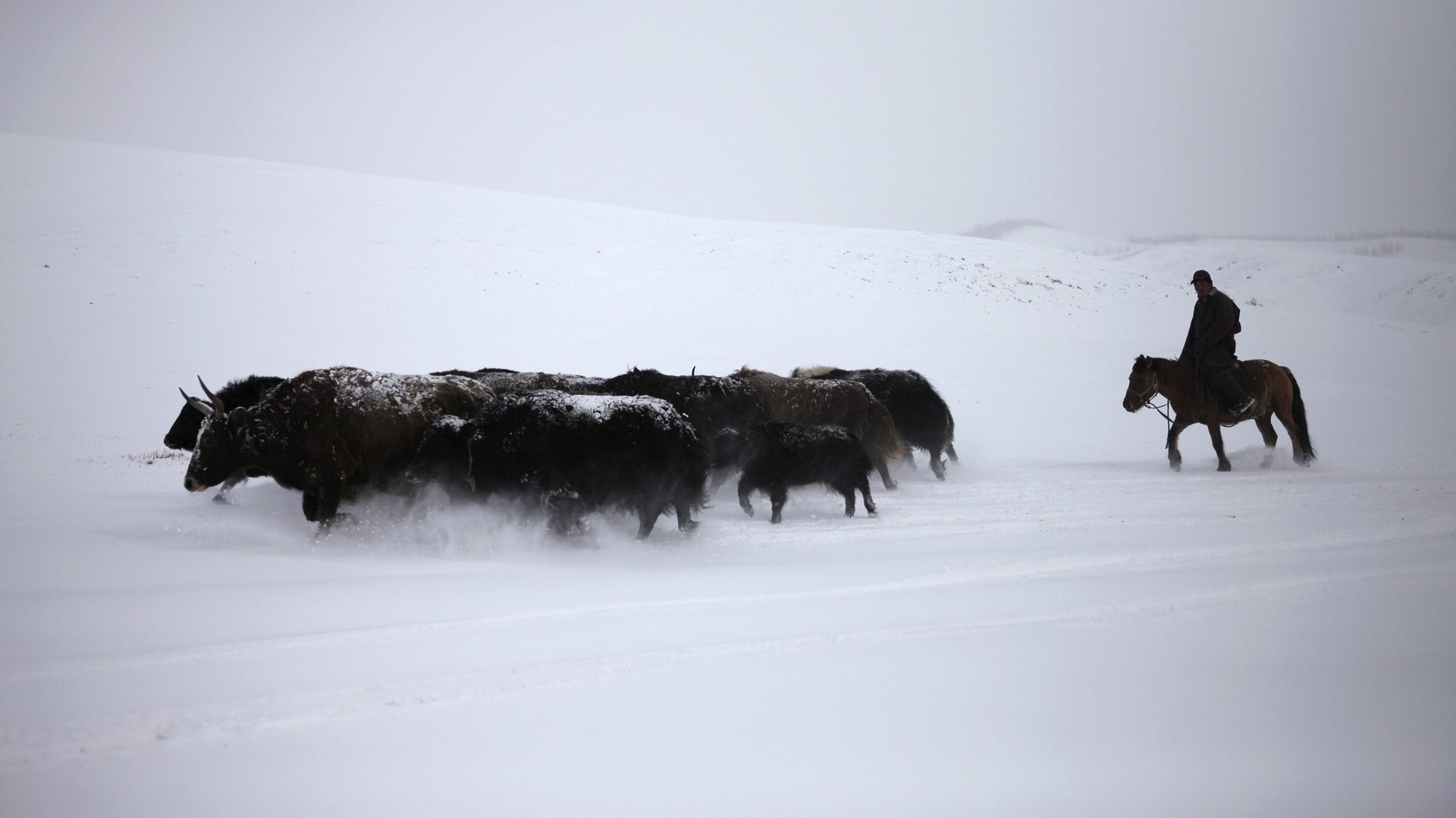Political tensions in the Himalayas have made it hard for yaks to mate
The stand-off between India and China over the Himalayan area of Doklam may be over. But the fresh political tensions among the countries that share the Himalayas make it clear that half-hearted efforts to return to a more peaceable border aren’t going anywhere. Too bad for the yaks.


The stand-off between India and China over the Himalayan area of Doklam may be over. But the fresh political tensions among the countries that share the Himalayas make it clear that half-hearted efforts to return to a more peaceable border aren’t going anywhere. Too bad for the yaks.
A symbol of the Himalayas, and one of the sturdiest animals alive, yaks, the massive, hairy “cows” of earth’s highest peaks are more fragile and at risk than their sheer bulk would suggest. The threats are many, to both wild yaks, of whom very few remain, and domesticated ones. The wild, “pure breed” yak population is estimated at no more than 10,000 to 15,000 individuals. Domesticated yaks, who are often bred with cows, are over 14 million strong. Some 90% of the world’s yak population, both wild and domestic, is in China-controlled Tibet where political controls have steadily increased, while smaller numbers of largely domestic yak are scattered across Bhutan, India, Nepal and other Himalayan nations.
Manmade political borders that stop yaks and their herders from freely walking across mountainous passes are one of the main obstacles in the search for the most suitable pastures and mating companions. Yak herds usually have very few males–they tend to live alone until the mating season (see here for all the details on yak breeding you might want to know)– but the lack of free-crossing has meant that in areas outside of Tibet, there’s a paucity of males when it’s time to mate. That has led to inbreeding, which has made the animals weaker, and more prone to illness.
Climate change, too, has been a factor in the declining number of yaks in the wild, since this animal, which can be found at 2,000 to 5,000 meters above sea level, thrives at very low temperatures. A report by the Nepal-based International Centre for Integrated Mountain Development (ICIMOD), an intra-governmental organization, says that rising temperatures have led to uneven growth of grass, leaving yaks with fewer nutrients than needed.
Yaks are a crucial economic resource for the populations who live in the Himalayas: they are used for transportation, for carrying loads up steep paths, and as a source of milk, meat, fur, thick wool and, recently, even high-end yarn–shorn from baby yaks to produce extremely warm, luxury fibers for the knitting and fashion industry. But lifestyle changes in the Himalayas, too, are putting the numbers of yaks in their normal habitat at risk: as urbanized areas expand and seduce traditional mountain dwellers, fewer young people from the Himalayas see yak herding, with all its hardship, as a desirable way of life.